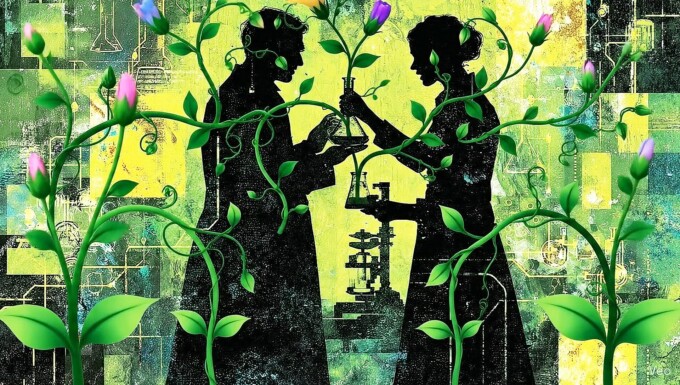Summary: Innovation requires a culture that embraces risk-taking, experimentation, and optimism. This article explores how culture influences innovation. It provides historical and contemporary examples of how different cultures have fostered or hindered innovation.
American culture is in the throes of a debate over technology and innovation. On the one hand, survey after survey report overwhelmingly positive perspectives on the benefits of technology. On the other hand, bestselling books such as The Shallows and The Age of Surveillance Capitalism, popular articles in publications like The Atlantic and The New York Times, and documentaries like The Social Dilemma regard technology with suspicion and fear.
Polling shows that the public is optimistic about technology but also supports increased regulation that would chill technological progress. Other polls report low support for emerging technologies like autonomous vehicles, artificial intelligence, and drones. In short, American culture is at a crossroads – technological pessimism or optimism, fear or hope. History has shown that this choice, an ongoing choice, has profound consequences for human well-being.
Innovation, particularly technological innovation, has brought humanity from subsistence to prosperity, improving the lives of millions. Over the last two hundred years, life expectancy, child mortality, disease eradication, housing conditions, pest infestations, travel, communication speeds, sanitation, food quality and cost, clothing quality and cost, and income per person have all improved. Educational resources and entertainment options have become cheaper, high quality, and ubiquitous.
Innovation and technology have been central to these improvements. The Mayflower, for instance, took 66 days to cross the Atlantic. The typical flight from London to New York takes just shy of 7 hours. That jump in quality of transportation couldn’t have occurred without better technology, and it didn’t happen in a vacuum.
While innovation is a deeply human activity – toolmaking, for example, differentiates us from most other organisms – history demonstrates that innovation is not inevitable. In fact, these last two hundred years are a blip in human history, which was mostly technologically stagnant. Like a flowering plant, technological progress needs the right environment to thrive. Specifically, it requires a culture that embraces innovation.
The importance of culture to innovation has been clear throughout history. To name one dramatic example, Johannes Gutenberg’s printing press, which the German entrepreneur invented in 1450, was not the first such discovery. The earliest known printing press was invented in China nearly one thousand years earlier. However, Gutenberg’s press changed the world because it was deployed in a culture that encouraged further innovation and use.
One way that culture affects innovation is by encouraging or discouraging innovators – the people willing to experiment and take risks. People have a natural desire to invent, but innovators have more freedom to develop and disseminate inventions when they’re in a culture that embraces innovation.
Today, it is a badge of honor to be “working class” or known as a hard worker. But for most of human history, as the economic historian Deirdre McCloskey explains in her 2010 book Bourgeois Dignity, it was much more honorable to be an elite scholar, government bureaucrat, or religious official than a worker or merchant, and commerce and innovation were derided. She notes the absence of businesspeople as characters in most of Shakespeare’s works—The Merchant of Venice and The Merry Wives of Windsor excepted. In seventeenth-century England and the Netherlands, this culture began to change. Innovators, and their innovations, became culturally accepted and praised, leading to the quality of life we enjoy today.
Engaging in cultural issues means engaging in choices, actions, and attitudes that impact the adoption or implementation of new technologies. These include depictions of technology, entrepreneurs, and innovators in media, literature, public rhetoric, social norms, and attitudes, as well as ethical and moral discussions. Rhetoric, religion, a belief in progress, and freedom are four important aspects of cultural attitudes towards technology. Culture is not limited to these factors, but they illustrate what “a culture that embraces innovation” might look like.
Rhetoric, or “the means of [unforced] persuasion,” as McCloskey defines it in Bourgeois Dignity, plays a key role in culture. McCloskey emphasizes rhetoric and freedom as the core ingredients behind the sudden upward trend in quality-of-life conditions. Cultures that began praising the everyday innovator and merchant instead of denigrating them experienced significant economic growth and increases in well-being. Cultures with a rhetoric that encouraged and maintained an atmosphere open to innovation are where sustained innovation has occurred.
Literature, theater, art, films, and other cultural artifacts all can contain rhetoric around innovation. Unfortunately, in the stories we consume, it is easier to spot technology as the villain rather than the hero or helper. The Terminator is brought up in the context of artificial intelligence discussions much more often than the helpful C-3PO in Star Wars. Which does our culture venerate more: Black Mirror or Star Trek? These stories influence cultural openness to innovation.
Religion informs many cultural beliefs. Popular speakers, writers, and influential pastors sway religious perspectives via online tools, shows, and bestselling books. Arthur Diamond from the University of Nebraska Omaha emphasizes religion as uniquely powerful given its authority, metaphysical belief structure, and the high value of personal ethical principles.
Discussing the history of coffee, the late Calestous Juma from Harvard University noted that the spread of the beverage was initially halted by significant resistance from religious and political leaders. However, when Pope Clement VIII ruled that Christians in Europe could drink coffee, it helped galvanize the spread of the product. Similarly, religious people today look to their leaders, sacred texts, and respected writers to inform their views on topics like innovation.
A belief in progress and a better future are also key ingredients to fostering a culture of innovation. The European Scientific Revolution broke the long-standing norm holding Greek philosophers as the gold standard of science. Instead, the latter era became one of experimentation and building upon new ideas with a forward-looking view. The notion that the future can even be a better place than the present or past has a profound influence on whether a culture is open or closed to innovation.
Finally, freedom, both cultural and political, to innovate matters. Some cultures throughout history, such as Japan during the Tokugawa or Edo periods (1603-1867), shut themselves off completely to new ideas and innovations. Others took a closed but more moderate approach, such as Ming China (1368-1644), the Ottomans (1299-1922), and Russia off and on over the last two hundred years.
Conversely, Japan flourished after it opened to the rest of the world following the Meiji Restoration in 1868, just as China did after it re-joined the global economy after 1978 and India did after its economic reforms in 1991.
Of course, these cultures have changed since these periods and have fostered innovations of their own. The United States has historically provided more freedom to innovators and has an economy that leads the world, but that status is not guaranteed to persist into the future. Finally, it must be emphasized that these are but four of the myriad factors that make up a cultural response to new technology and innovation.
What is to be done? Affecting cultural change is difficult but not impossible. Given the tremendous upside to a pro-innovation culture, as demonstrated by global quality-of-life improvements, action should be taken starting with discrete areas: encourage cultural entrepreneurs and combat unreasonable fear by telling the positive story of innovation.
There is also an important role for cultural entrepreneurs to provide ideas, rhetoric, and support for those who seek to invent and innovate. European history shows that there are three layers of cultural entrepreneurs: the superstars like the English philosopher Francis Bacon and the English mathematician Isaac Newton, a second tier of popularizers and interpreters less well known in the seventeenth century, such as the English scientist and doctor Thomas Browne, the Italian philosopher Tommaso Campanella, and the polymath and “intelligencery” Samuel Hartlib whose 25,000 folios are available in full here, and a third tier of forgotten names who helped disseminate those ideas. Current cultural entrepreneurs like Jason Feifer, Jason Crawford at Roots of Progress, Nir Eyal, who writes on mental health and technologies, and the authors mentioned earlier are good examples. And, of course, organizations like Human Progress.
Today, we often exhibit an attitude of caution and restraint toward innovation. There is an opposing rhetoric that urges innovators to slow down or avoid certain types of new technologies, and many believe that thinking seriously about technology means being critical of technology. According to an internal analysis by Stand Together (where I work), of the 35 most widely-read technology nonfiction books published between 2018 and 2019, approximately 60 percent were negative towards innovation.
The positive story and history of innovation need to be told. In an ideal world, innovations and the people who create them, especially those who are just starting out, would be celebrated across cultures. Courage in pursuit of these principled ends would be admired and emulated. People young and old would aspire to be innovators and would seek out new adventures and new ways of doing things. Academics would develop new technology, instruct innovators, and study how to encourage invention and innovation. Business leaders would compete in the marketplace for consumer approval rather than in the halls of government for legislative approval. Americans from all walks of life could look at the progress around them, the tangible ways their lives have improved, and feel optimistic about the future.
American culture is right now in the middle of this debate, and there are indications that pessimism might win. Although policy solutions friendly toward innovation are crucial and should be maintained, changing cultural attitudes towards innovation is just as important. Just like the technological development which it encourages, moving the cultural needle requires a willingness to struggle and fail, learn from failure, and work toward a better future. Nothing less than the lives of our descendants depends on it.





